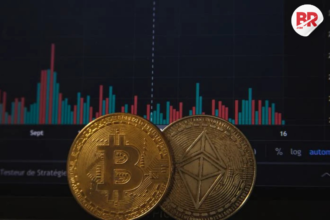
In a big move from Silicon Valley, xLight just raised $40 million to build a powerful laser. This laser could change the way we make computer chips—and bring the U.S. back on top in a global tech fight against China.
These chips are not just for laptops or phones. They are the heart of AI, cloud computing, and almost everything smart. And the most important tool to make these chips? Something called EUV lithography machines.

That’s where xLight comes in.
Why xLight’s Laser Matters
EUV (extreme ultraviolet) machines help create tiny, powerful chips. Today, one European company, ASML, is the only player making these machines. But xLight wants to change that. Their laser will be the core part of this tool.
The startup’s CEO, Nicholas Kelez, said,
“This is the most expensive tool in the fab. It decides how fast and cheap we make chips.”
The goal is to help factories (called fabs) make more chips, faster and at a lower cost.
Not Just Another Startup
xLight is working with top labs in the U.S. and plans to keep the tech in friendly hands. They are also partnering with ASML to build their prototype.
Back in the day, a U.S. company named Cymer built the first EUV laser. But it got sold to ASML for $2.5 billion. Many now say that was a mistake.
Pat Gelsinger, ex-Intel CEO and now chairman at xLight, said,
“We gave away something big. Let’s not repeat that.”
Also Read US Retail Giant Costco to Set Up Tech Hub in India, Create 1000 Jobs, Sources Say
China is Not Sitting Still
China is pumping billions into its own EUV tech. Some of its companies have claimed progress. And Huawei, their tech giant, is also getting involved.
So the race is real. And xLight wants to win it for the U.S.
Who’s Backing xLight?
The funding round was led by Playground Global. Others joining in were:
- Boardman Bay Capital Management
- Morpheus Ventures
- Marvel Capital
- IAG Capital Partners
Much of xLight’s tech will come from U.S. national labs, and the company is working hard to build a local supply chain.
xLight is more than just a startup with a cool idea. It’s part of a bigger story. A tech battle between the U.S. and China. A fight over who controls the future of chips—and in many ways, the future itself.
As Gelsinger put it,
“We can build this here—or watch someone else take the lead.”
Also Read Nvidia’s Journey from $1 Billion to First Ever $4 Trillion Market Cap in 26 Years












